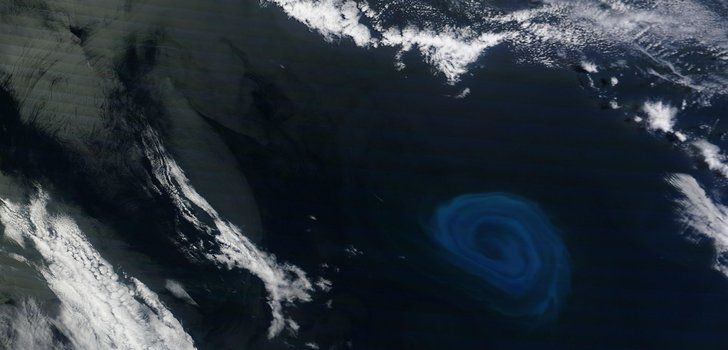Ocean ‘Dead Zones:’ Why There Are Some Parts Of The Atlantic Where Marine Life Can’t Survive

Some areas of the ocean are so hostile to marine life that they’re virtually uninhabitable. These so-called dead zones contain little to no oxygen, meaning any fish that enter would likely suffocate and die. While dead zones are not uncommon near inhabited coastlines, where industrial runoff can trigger algae blooms that suck all of the oxygen out of the water, they’re now popping up in places scientists didn’t expect – in the open Atlantic Ocean.
This is the first time such dead zones have been found far from any shore and could be a sign of the effects of ocean warming on marine ecosystems, according to a new study published Thursday in the journal Biogeosciences. Researchers found several dead zones located hundreds of miles off the coast of West Africa where oxygen levels were 20 times lower than what scientists previously thought. One of the dead zones scientists observed was located less than 60 miles north of the Cape Verde archipelago, which could spell danger for marine life near the islands should the dead zone move.
“It is not unlikely that an open-ocean dead zone will hit the islands at some point,” Johannes Karstensen, a researcher from the Geomar Helmholtz Centre for Ocean Research Kiel in Germany and the study’s lead author, said in a statement. “This could cause the coast to be flooded with low-oxygen water, which may put severe stress on the coastal ecosystems and may even provoke fish kills and the die-off of other marine life."
The dead zones were created in large areas of swirling water known as eddies, which form when two or more currents collide. They measured roughly 60 to 100 miles in diameter and extended to a depth of about 330 feet. The swirling makes it difficult for oxygen to be exchanged between the rotating current and the surrounding ocean, researchers said. Algae was able to grow on the surface of the eddies, which gives the dead zones a light-blue tint when viewed from above. "From our measurements, we estimated that the oxygen consumption within the eddies is some five times larger than in normal ocean conditions,” Karstensen explained.
Scientists have long known that increasing ocean temperatures can lead to more ocean dead zones as warmer water holds less oxygen. According to previous research, the number of dead zones has doubled every decade since 1960. There are now about 400 dead zones across the globe. Dead zones typically form near coastlines where human impact on the environment is most severe.
© Copyright IBTimes 2025. All rights reserved.






















